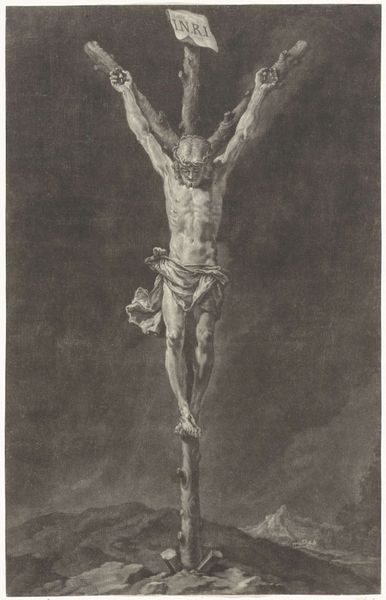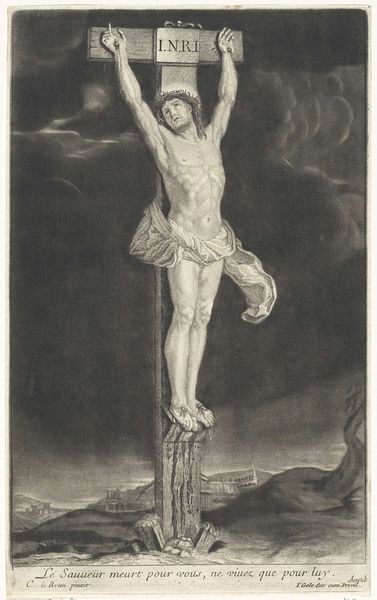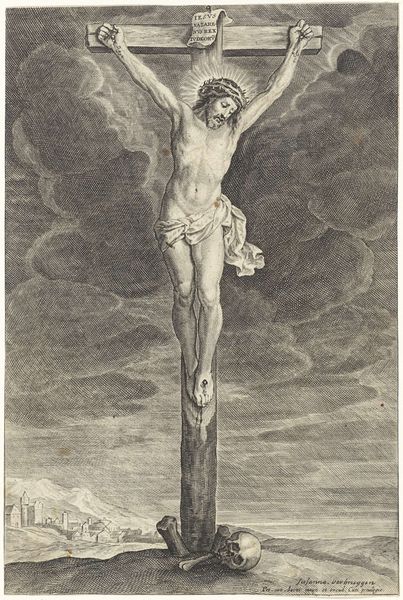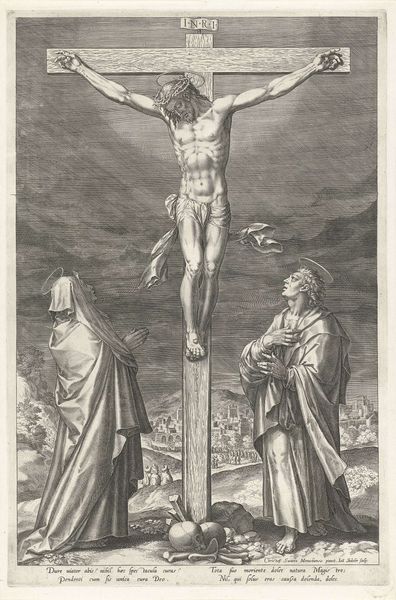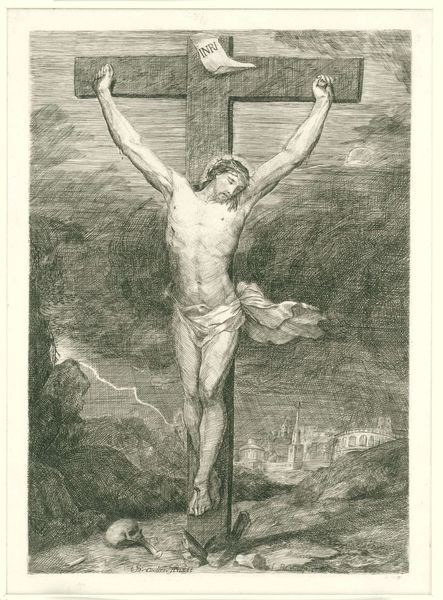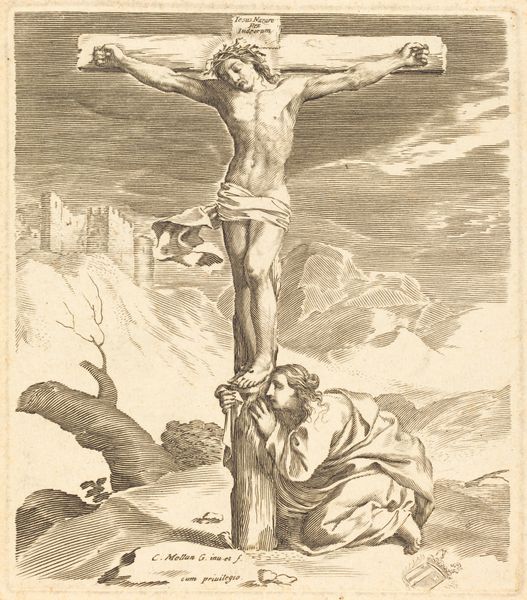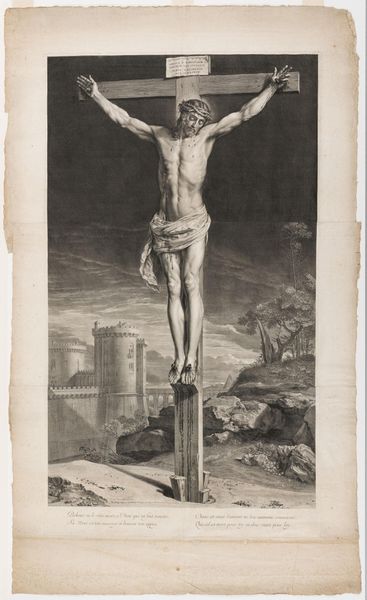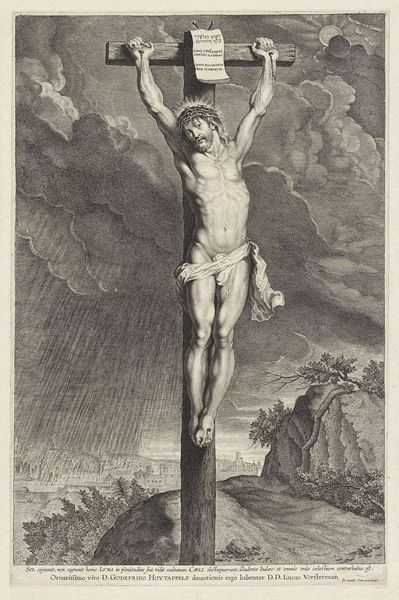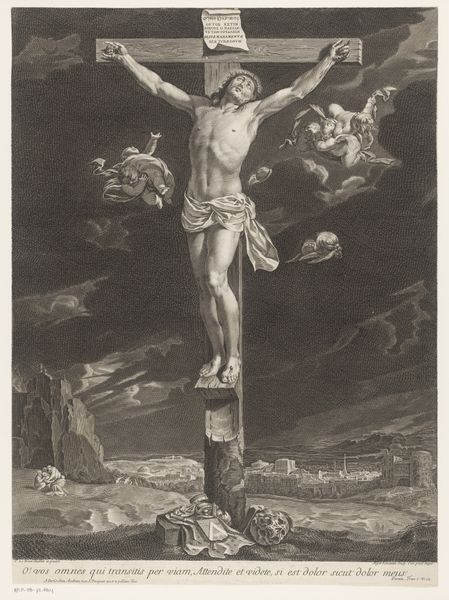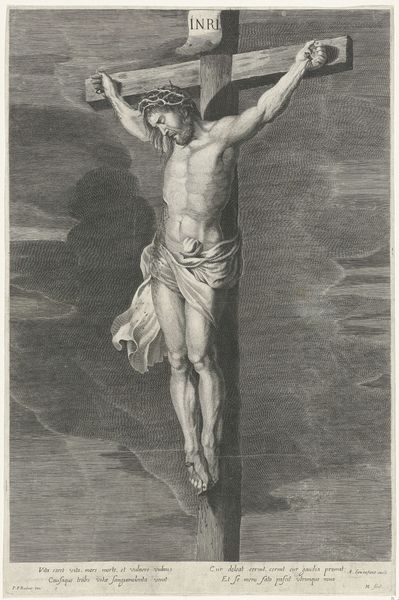
engraving
#
portrait
#
baroque
#
old engraving style
#
figuration
#
history-painting
#
nude
#
engraving
Dimensions: height 256 mm, width 172 mm
Copyright: Rijks Museum: Open Domain
Curator: Here at the Rijksmuseum, we have a moving engraving titled "Christus aan het kruis" by Pieter Schenk, dating somewhere between 1670 and 1713. Editor: My goodness, it’s stark. The chiaroscuro is so dramatic – makes you feel like you're standing right there on Golgotha under that turbulent sky. It really wrenches something loose inside. Curator: Absolutely. Schenk, while known for portraits, really taps into the Baroque sensibility here, using intense contrast and emotional figuration to convey a powerful scene. We have Christ, almost entirely nude, on the cross against that forbidding landscape. Editor: You know, the near-nudity seems less about vulnerability, and more a bold statement. It emphasizes the physicality of suffering, almost confronts you with the stark reality of it. What strikes me, though, is the crowd in the far back...it feels distant, like onlookers rather than mourners. Curator: That distance, I think, plays into a bigger socio-political point. These kinds of images weren’t just religious art; they were powerful reminders of sacrifice, obedience, and social order at a time of considerable religious and political upheaval. The image literally places power – both sacred and worldly – up high, literally looking down on the masses. Editor: Right. And the engraver's skill… it's insane! Look at the detail in Christ's muscles, the agonizing turn of his head. The medium itself is working to emphasize precision. The inscription "Salvator cruci affixus," 'Savior fixed to the cross' below – the words alone bring their own kind of gravity, especially considering this would have been distributed widely. It speaks of a world clinging to salvation, pinned there like Christ. Curator: And think of the viewers then. For a largely illiterate populace, such a potent visual could reinforce the doctrines the Church – but more broadly power structures – wished to impress. It uses beauty and horror in tandem to cement a particular view. Editor: Seeing it now, centuries later, the layers of artistry and the historical context still bring you face-to-face with, I don’t know… humanity’s grandest questions. Curator: It definitely reminds us that art acts as a window, or a mirror, through different epochs. Editor: Exactly, some kind of haunting mirror—reflecting humanity and belief itself.
Comments
No comments
Be the first to comment and join the conversation on the ultimate creative platform.

